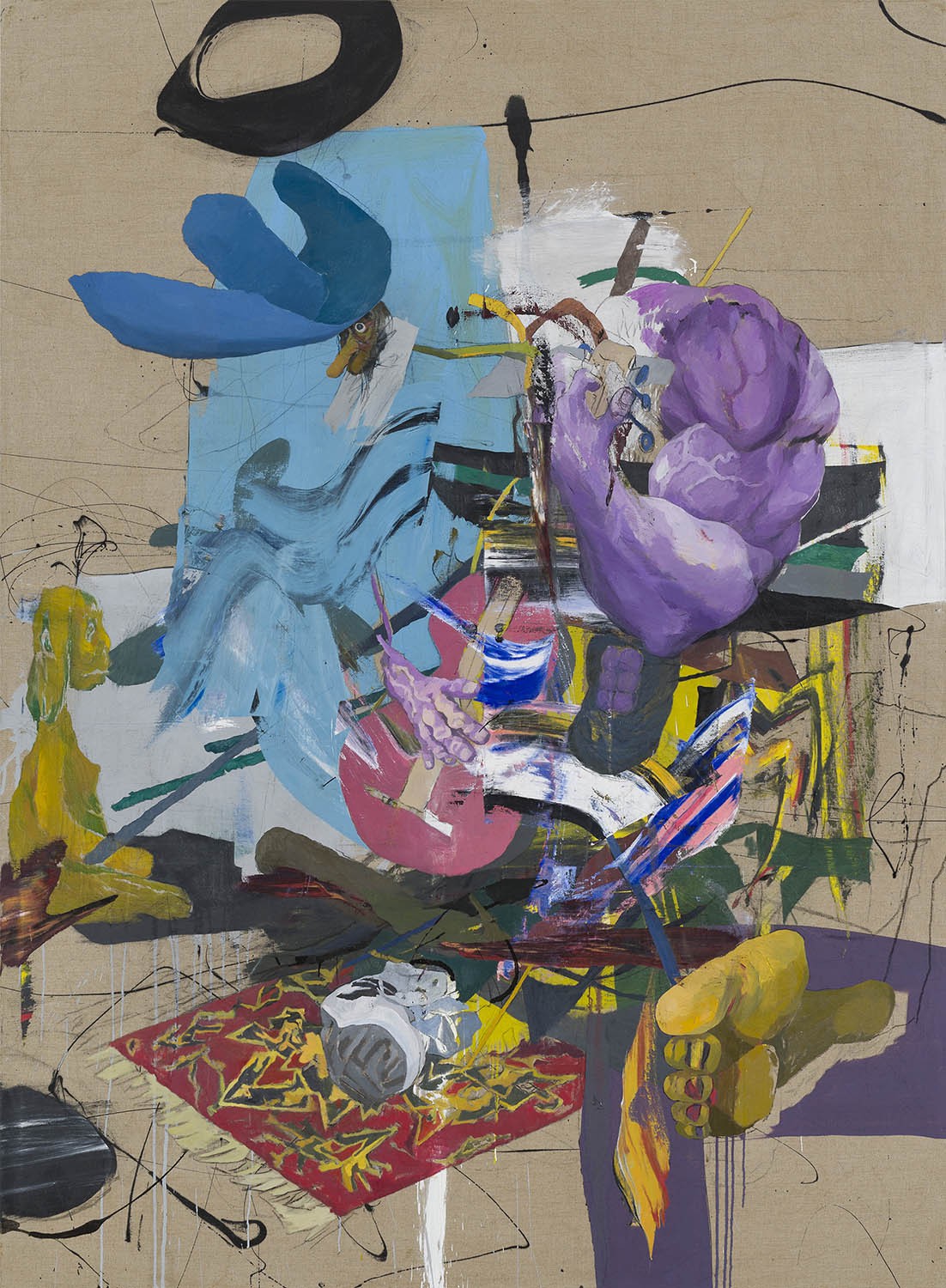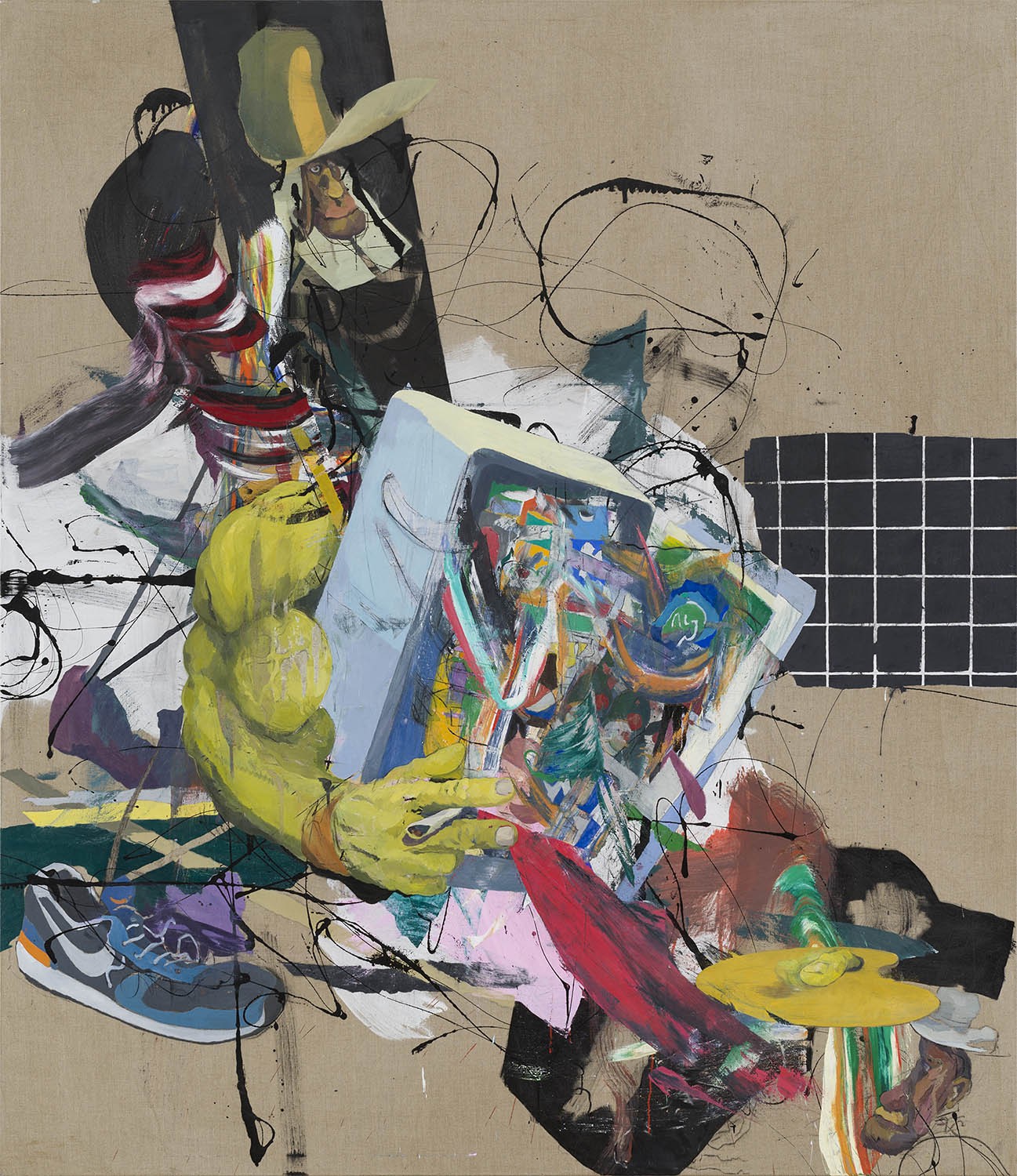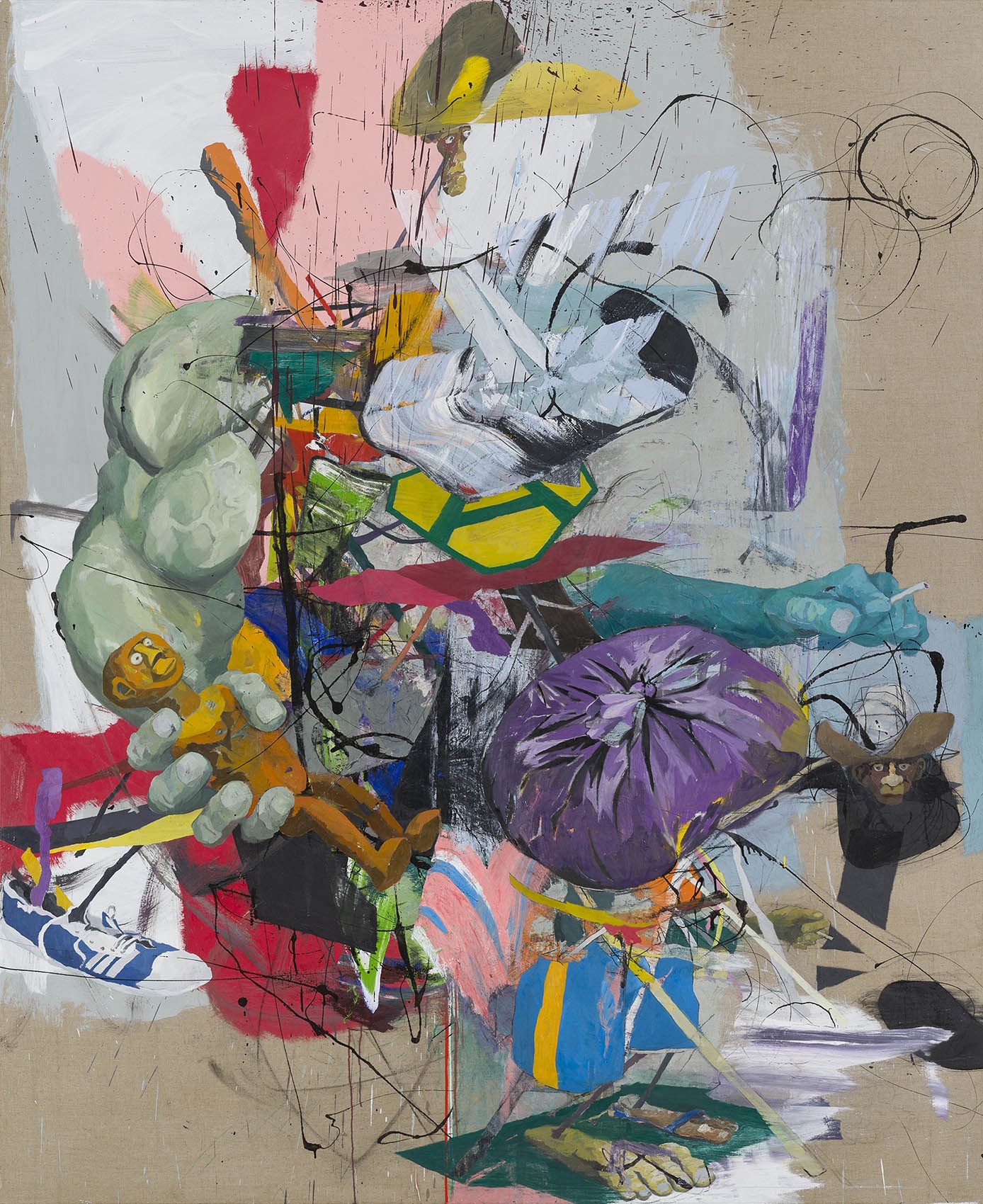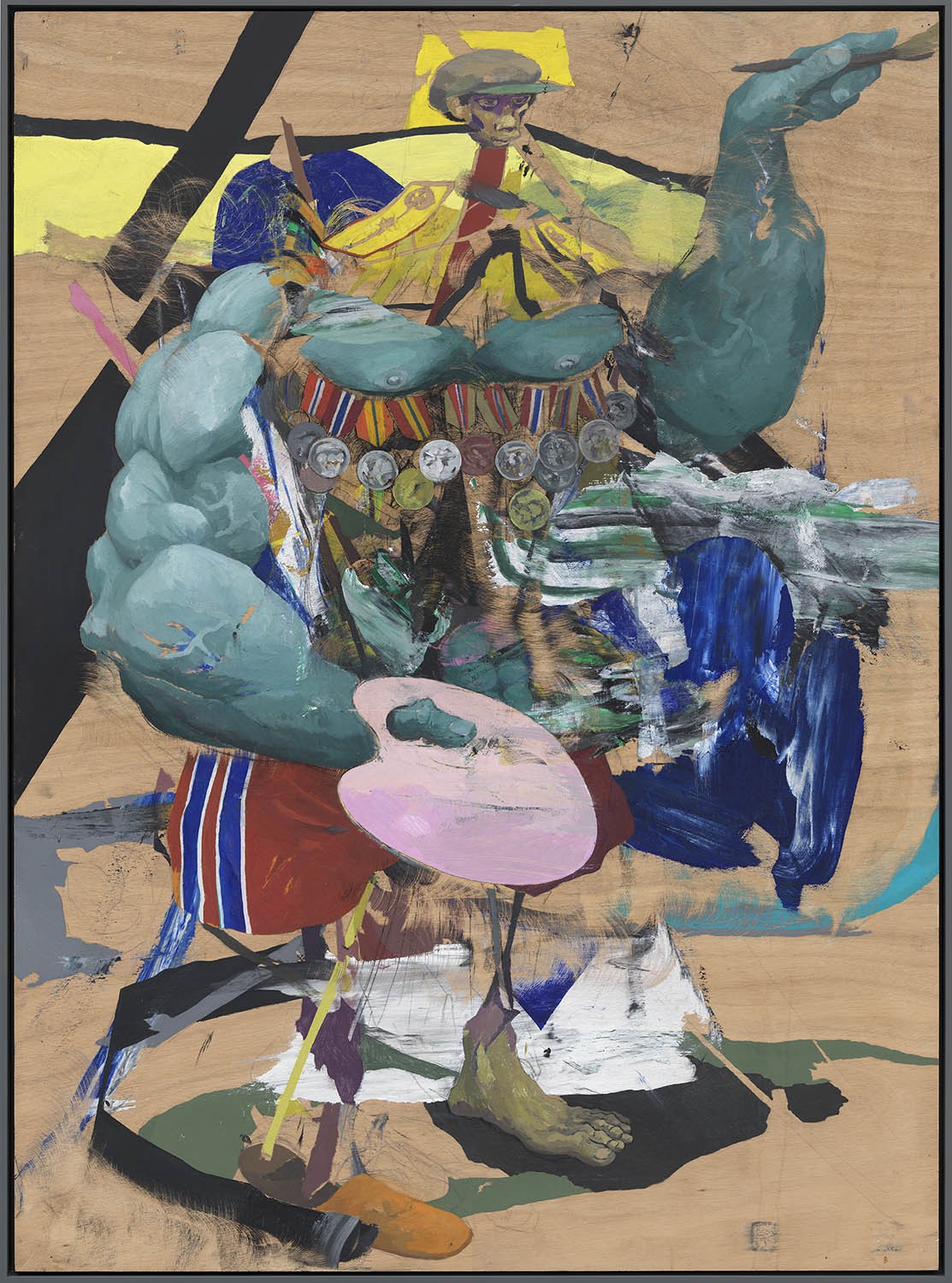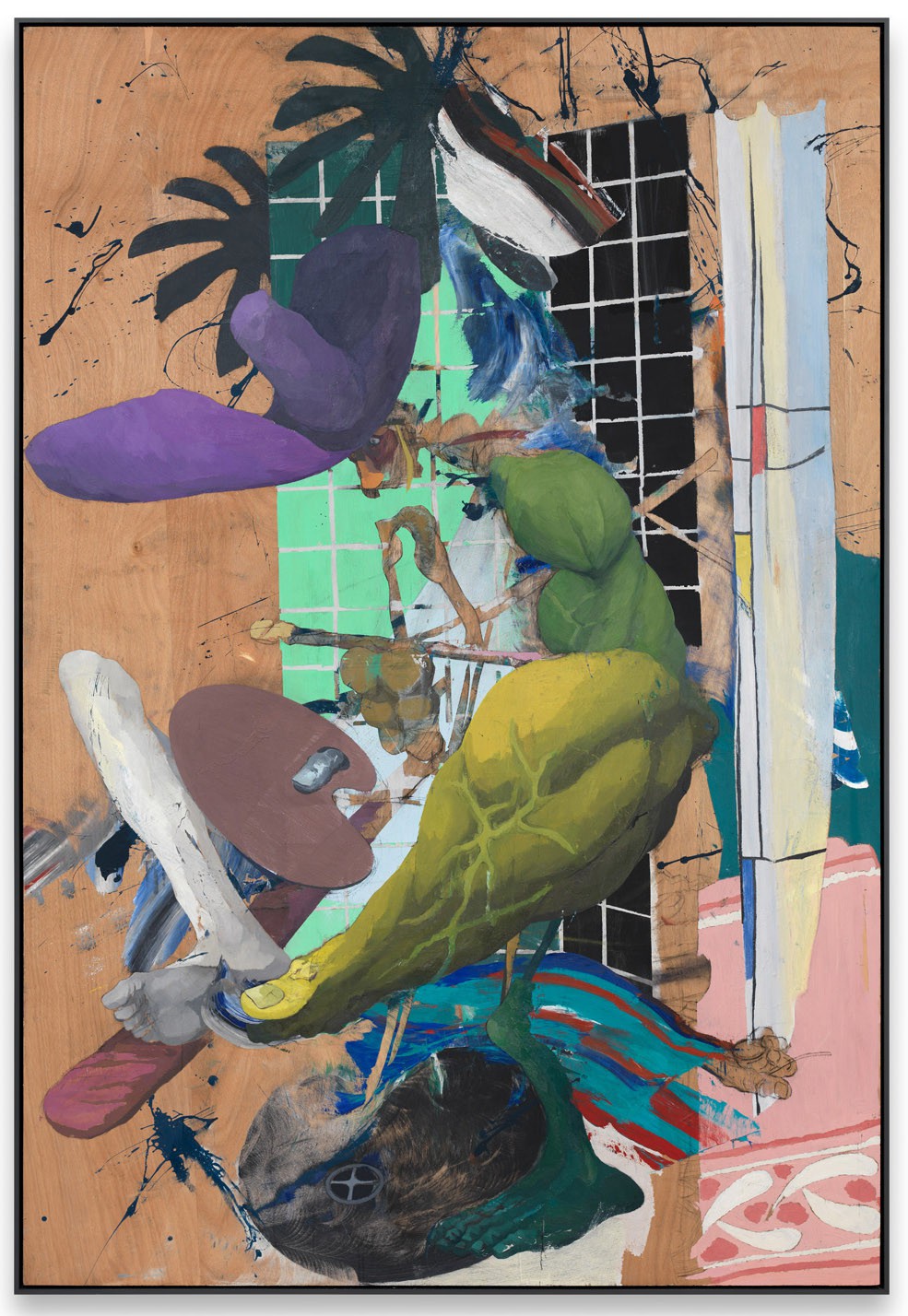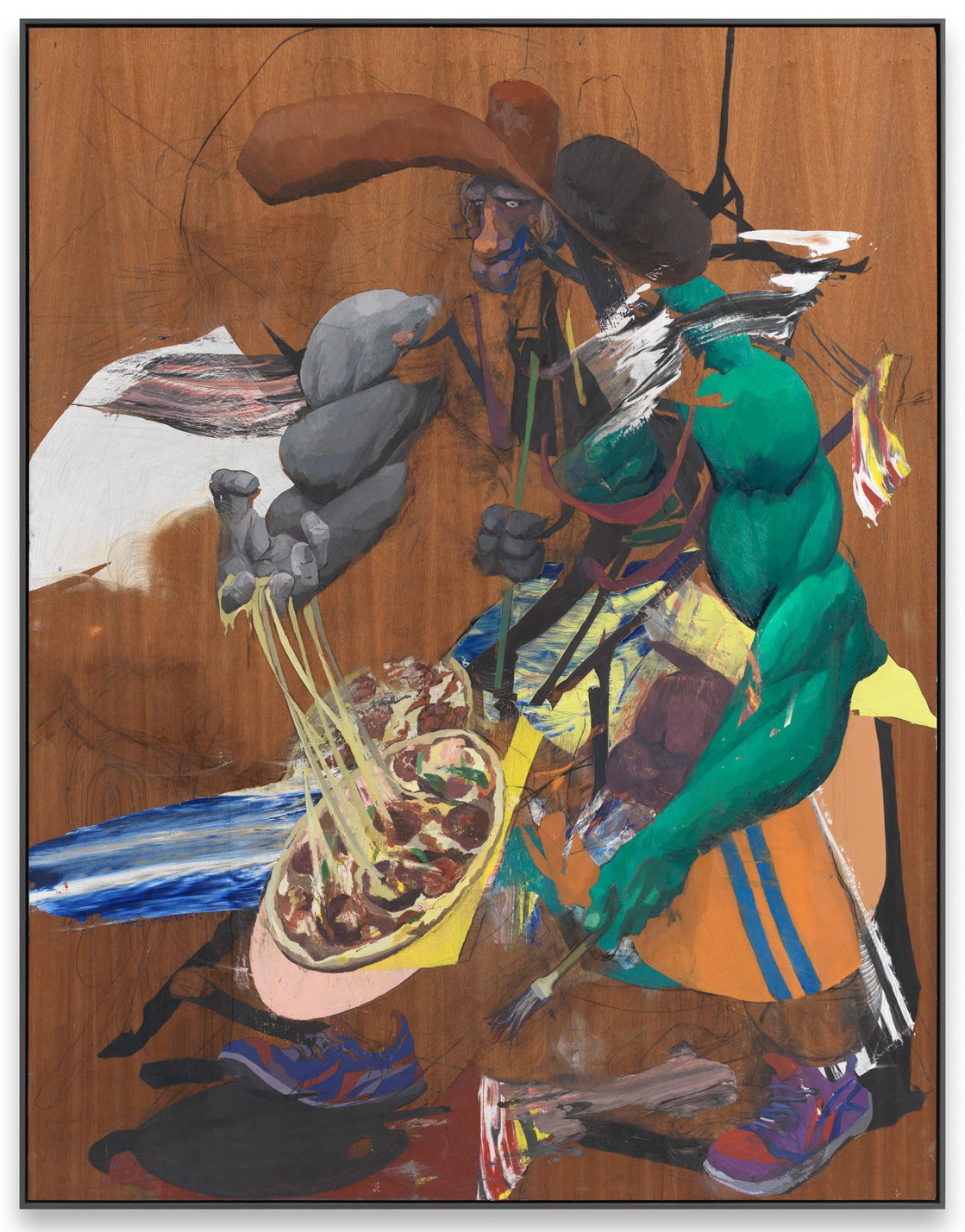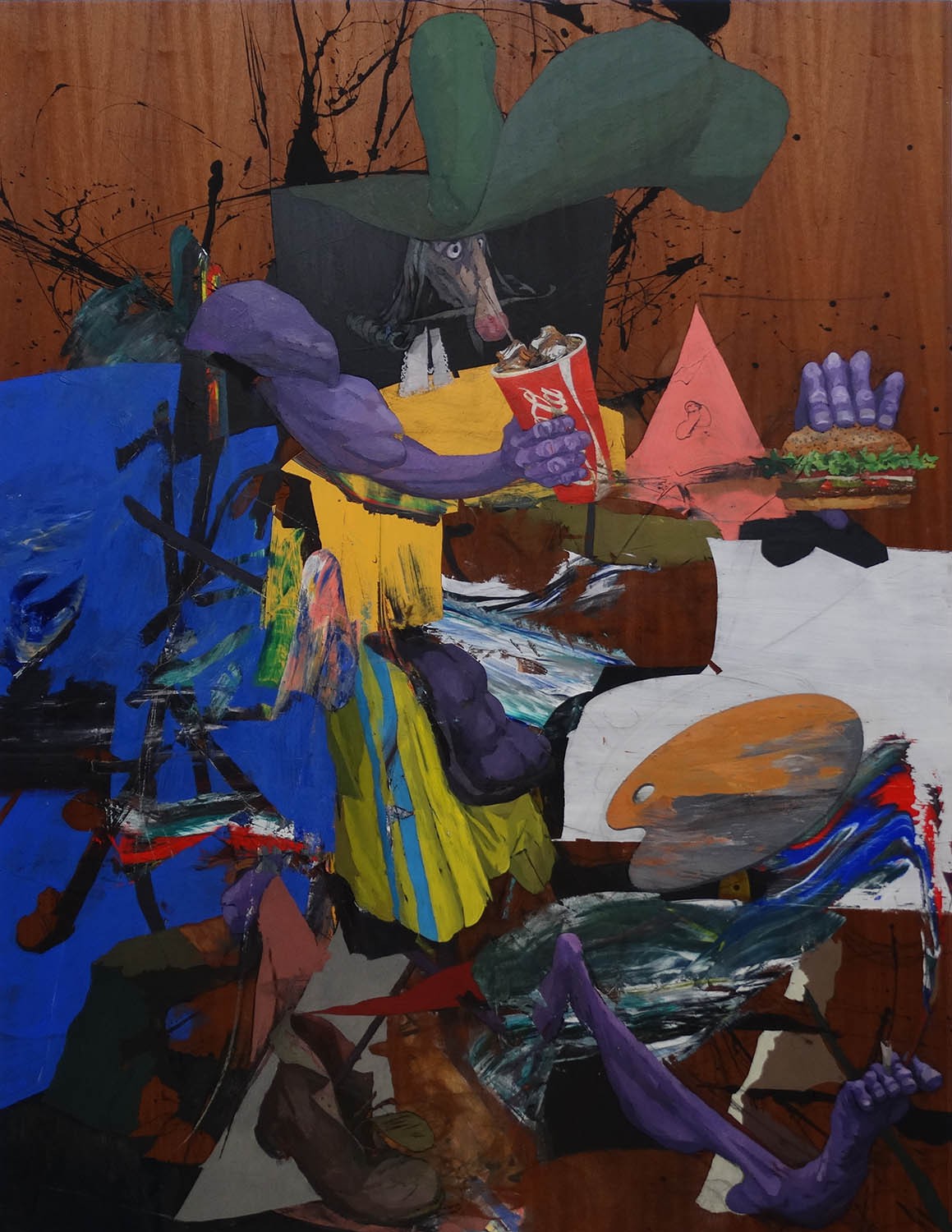Peter Stauss
Peter Stauss’ paintings recreate fables of our times. Deriving imagery from a cross-section of ideological, historical, religious and art-historical sources, his work combines essential philosophical themes with questions about the genesis of form in painting and sculpture. A recurring cast of characters has populated his canvases over the years.
These characters range from saints to soldiers, bedraggled revolutionaries, dope-smoking hippies and dislocated historical figures who embody a general sense of self-pity in the face of socio-political lethargy and stagnation.
The poppy, vibrant compositions of Stauss’ recent work signal a clear departure in style for the artist: While earlier works depicted wild, animated scenes with multiple characters, the newer paintings fuse — or perhaps more accurately prise open — seemingly disparate body parts and objects into an individual figure in which each component forming a constitutive element of the painting itself. His most recent painting focuses on a single character that appears in different forms throughout this new body of work: the Dutch Master.
Although their significance may not seem immediately apparent, the legacy of Dutch master paintings weighs heavily on our present. Their depictions of the emergence of an inchoate capitalism beg comparison to our contemporary system of alienated labor, speculation, and futures dealing. Stauss’ irreverent take on this figure and its legacy mixes the comic and the vulgar with his references to fast food, super heroes, body building, and leisure.
Peter Stauss (b. 1966, Sigmaringen) lives and works in Berlin. Selected exhibitions include at Kunsthalle Marcel Duchamp, Switzerland; Helsinki Contemporary, Helsinki; Deichtorhallen, Hamburg; and Drawing Room, London.


